Detection of Self-Healing Discharge in Metallized Film Capacitors Using an Ultrasonic Method
Abstract
1. Introduction
2. Self-Healing Detection with Ultrasonics
2.1. Typical MFC Structures
2.2. Self-Healing and Ultrasound Emission
3. Ultrasonic Features of Self-Healing Events
3.1. Experimental Setup
3.2. Ultrasonic Time-Domain Features in Self-Healing Detection
3.2.1. Critical Voltages for Self-Healing Discharges
3.2.2. Time-Domain Features of Self-Healing Discharges
3.3. Ultrasonic Frequency-Domain Features in Self-Healing Detection
4. Self-Healing Detection Software Package
5. Conclusions
Author Contributions
Funding
Acknowledgments
Conflicts of Interest
References
- Tortai, J.-H.; Bonifaci, N.; Denat, A.; Trassy, C. Diagnostic of the self-healing of metallized polypropylene film by modeling of the broadening emission lines of aluminum emitted by plasma discharge. J. Appl. Phys. 2005, 97, 53304. [Google Scholar] [CrossRef]
- Zhao, S.; Chen, S.; Wang, H. Degradation modeling for reliability estimation of DC film capacitors subject to humidity acceleration. Microelectron. Reliab. 2019, 100, 113401. [Google Scholar] [CrossRef]
- Li, Z.; Li, H.; Lin, F.; Chen, Y.; Liu, D.; Wang, B.; Li, H.; Zhang, Q. Lifetime investigation and prediction of metallized polypropylene film capacitors. Microelectron. Reliab. 2013, 53, 1962–1967. [Google Scholar] [CrossRef]
- Makdessi, M.; Sari, A.; Venet, P. Metallized polymer film capacitors ageing law based on capacitance degradation. Microelectron. Reliab. 2014, 54, 1823–1827. [Google Scholar] [CrossRef]
- Sawa, G.; Arakawa, K.; Nagao, M.; Ieda, M. Conditions for complete self-healing breakdown in glow discharge polymerized styrene films. Thin Solid Films 1979, 59, 131–141. [Google Scholar] [CrossRef]
- Chen, Y.; Li, H.; Lin, F.; Lv, F.; Zhang, M.; Li, Z.; Liu, D. Study on Self-Healing and Lifetime Characteristics of Metallized-Film Capacitor Under High Electric Field. IEEE Trans. Plasma Sci. 2012, 40, 2014–2019. [Google Scholar] [CrossRef]
- Li, H.; Li, H.; Li, Z.; Lin, F.; Wang, W.; Wang, B.; Huang, X.; Guo, X. Temperature dependence of self-healing characteristics of metallized polypropylene film. Microelectron. Reliab. 2015, 55, 2721–2726. [Google Scholar] [CrossRef]
- Bel’Ko, V.O.; Bondarenko, P.N.; Emel’Yanov, O.A. The dynamic characteristics of self-healing processes in metal film capacitors. Russ. Electr. Eng. 2007, 78, 138–142. [Google Scholar] [CrossRef]
- Tortai, J.; Denat, A.; Bonifaci, N. Self-healing of capacitors with metallized film technology. J. Electrost. 2001, 53, 159–169. [Google Scholar] [CrossRef]
- Walgenwitz, B.; Tortai, J.-H.; Bonifaci, N.; Denat, A. Self-healing of metallized polymer films of different nature. In Proceedings of the 2004 IEEE International Conference on Solid Dielectrics, Toulouse, France, 5–9 July 2004; Volume 1. [Google Scholar]
- Li, H.; Li, H.; Li, Z.; Lin, F.; Liu, D.; Wang, W.; Wang, B.; Xu, Z. T pattern fuse construction in segment metallized film capacitors based on self-healing characteristics. Microelectron. Reliab. 2015, 55, 945–951. [Google Scholar] [CrossRef]
- Qin, S.; Ma, S.; Boggs, S.A. The mechanism of clearing in metalized film capacitors. In Proceedings of the 2012 IEEE International Symposium on Electrical Insulation, San Juan, PR, USA, 10–13 June 2012. [Google Scholar]
- Fuhrmann, H.; Carlen, M.; Chartouni, D.; Christen, T.; Ohler, C.; Votteler, T. Novel measurement methods for in-depth analysis of AC metallized film capacitors. In Proceedings of the Conference Record of the 2004 IEEE International Symposium on Electrical Insulation, Indianapolis, IN, USA, 19–22 September 2004. [Google Scholar]
- Chen, W.L.; Dong, Y.; Jia, H. Preliminary research on partial discharge and self-healing characteristics of metallized film capacitors. Power Capacit. React. Power Compens. 2008, 29, 31–36. (In Chinese) [Google Scholar]
- Belko, V.; Ivanov, I.; Plotnikov, A.; Belanov, V. Energy characteristics of self-healing process in metallized film capacitors. E3S Web Conf. 2019, 140, 02006. [Google Scholar] [CrossRef]
- Carlen, M.W.; Bruesch, P.; Gallay, R. Electrical endurance characterization of polypropylene winding capacitors for traction applications: A new experimental method. In Proceedings of the Seventh International Conference on Dielectric Materials, Measurements and Applications (Conf. Publ. No. 430), Bath, UK, 23–26 September 1996. [Google Scholar]
- IEC60831-2:2014. Shunt Power Capacitors of the Self-Healing Type for A.C. Systems Having a Rated Voltage up to and Including 1 000 V—Part 2: Ageing Test, Self-Healing Test and Destruction Test; AENOR: Madrid, Spain, 2014; Available online: https://www.doc88.com/p-5087810153910.html (accessed on 9 November 2020).
- Valentine, N.; Azarian, M.H.; Pecht, M. Metallized film capacitors used for EMI filtering: A reliability review. Microelectron. Reliab. 2019, 92, 123–135. [Google Scholar] [CrossRef]
- Gupta, A.; Yadav, O.P.; Devoto, D.; Major, J. A review of degradation behavior and modeling of capacitors. In Proceedings of the International Electronic Packaging Technical Conference and Exhibition, San Francisco, CA, USA, 27–30 August 2018; Volume 51920. [Google Scholar]
- Xin, D.; Fuchang, L.; Jin, L.; Zonggan, Y.; Nanyan, W. Influence factors for the self-healing of metallized polypropylene capacitors. In Proceedings of the 2000 Annual Report Conference on Electrical Insulation and Dielectric Phenomena (Cat. No. 00CH37132), Victoria, BC, Canada, 15–18 October 2000; Volume 2. [Google Scholar]
- Fa, L.; Tang, J.; Zhang, Q.; Zhang, M.; Zhang, Y.; Liang, M.; Zhao, M. Reflection and refraction of elastic wave at VTI-TTI media interface. Front. Phys. 2019, 15, 22601. [Google Scholar] [CrossRef]
- Sha, G.; Huang, M.; Lowe, M.J.S.; Rokhlin, S.I. Attenuation and velocity of elastic waves in polycrystals with generally anisotropic grains: Analytic and numerical modeling. J. Acoust. Soc. Am. 2020, 147, 2442–2465. [Google Scholar] [CrossRef] [PubMed]
- Fiorillo, A.S.; Pullano, S.A.; Critello, C.D. Spiral-Shaped Biologically-Inspired Ultrasonic Sensor. IEEE Trans. Ultrason. Ferroelectr. Freq. Control. 2019, 67, 635–642. [Google Scholar] [CrossRef] [PubMed]
- Fiorillo, A.S.; Pullano, S.A.; Bianco, M.G.; Critello, D.C. Ultrasonic Transducers Shaped in Archimedean and Fibonacci Spiral: A Comparison. Sensors 2020, 20, 2800. [Google Scholar] [CrossRef] [PubMed]

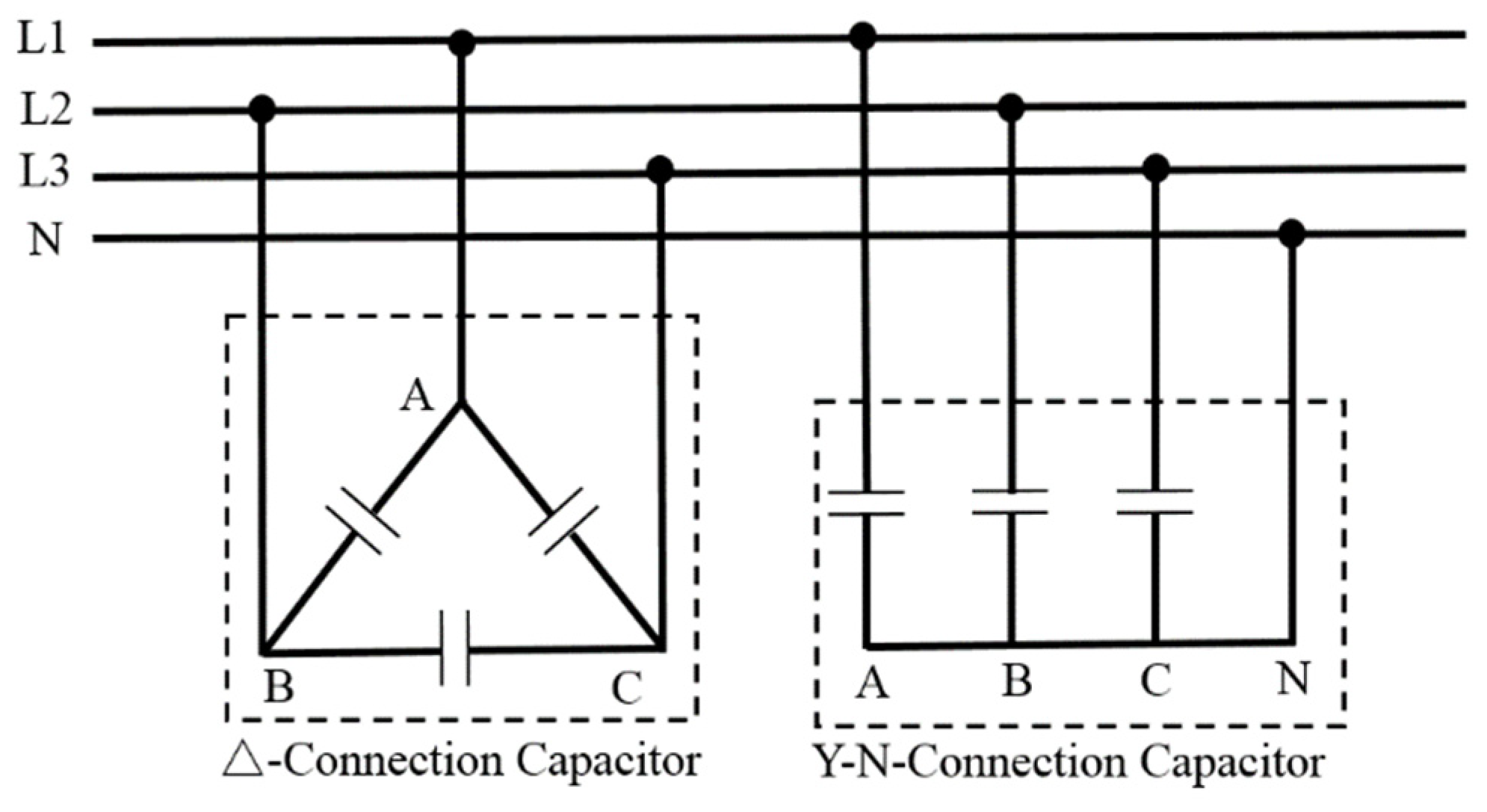
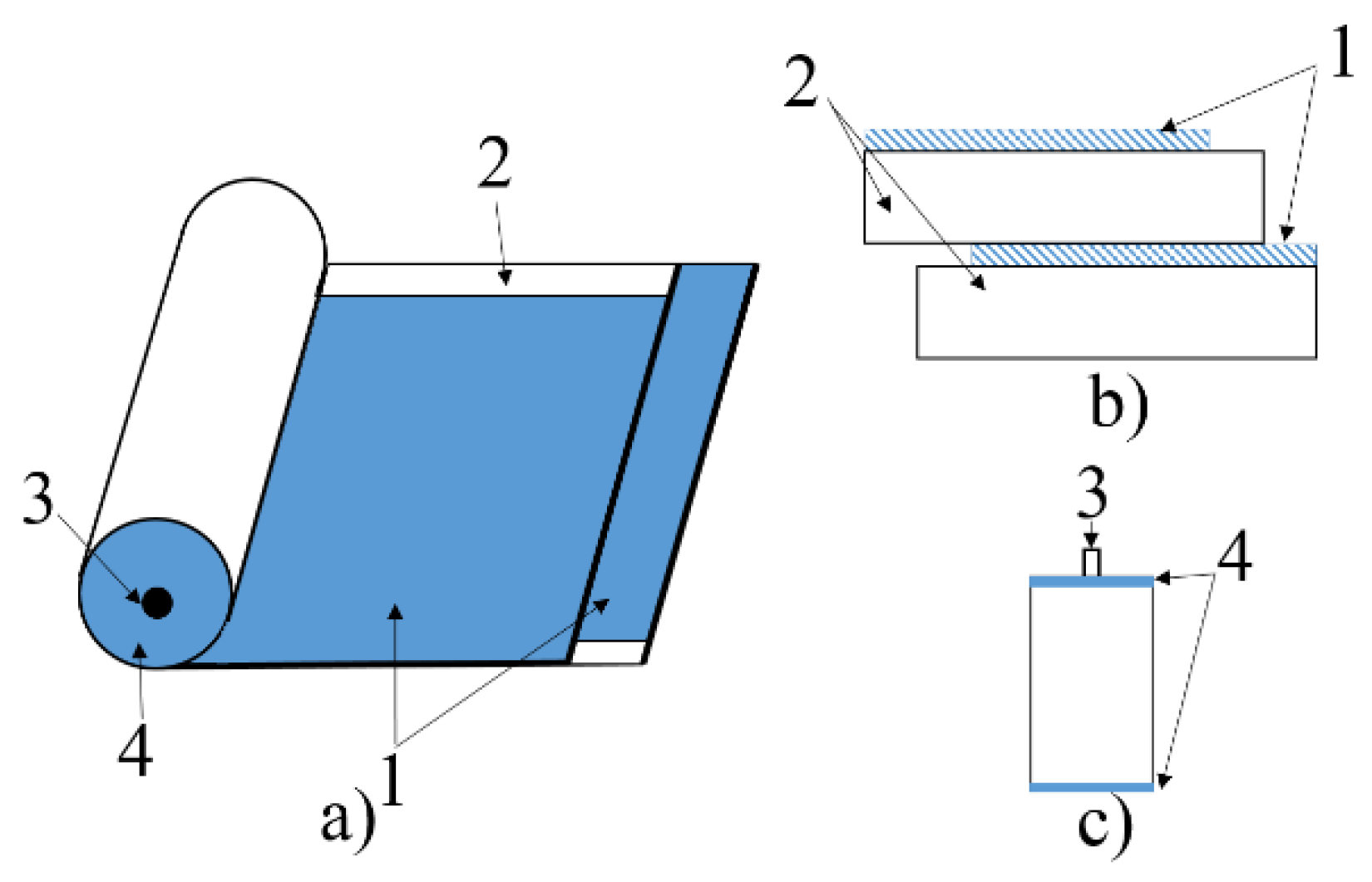
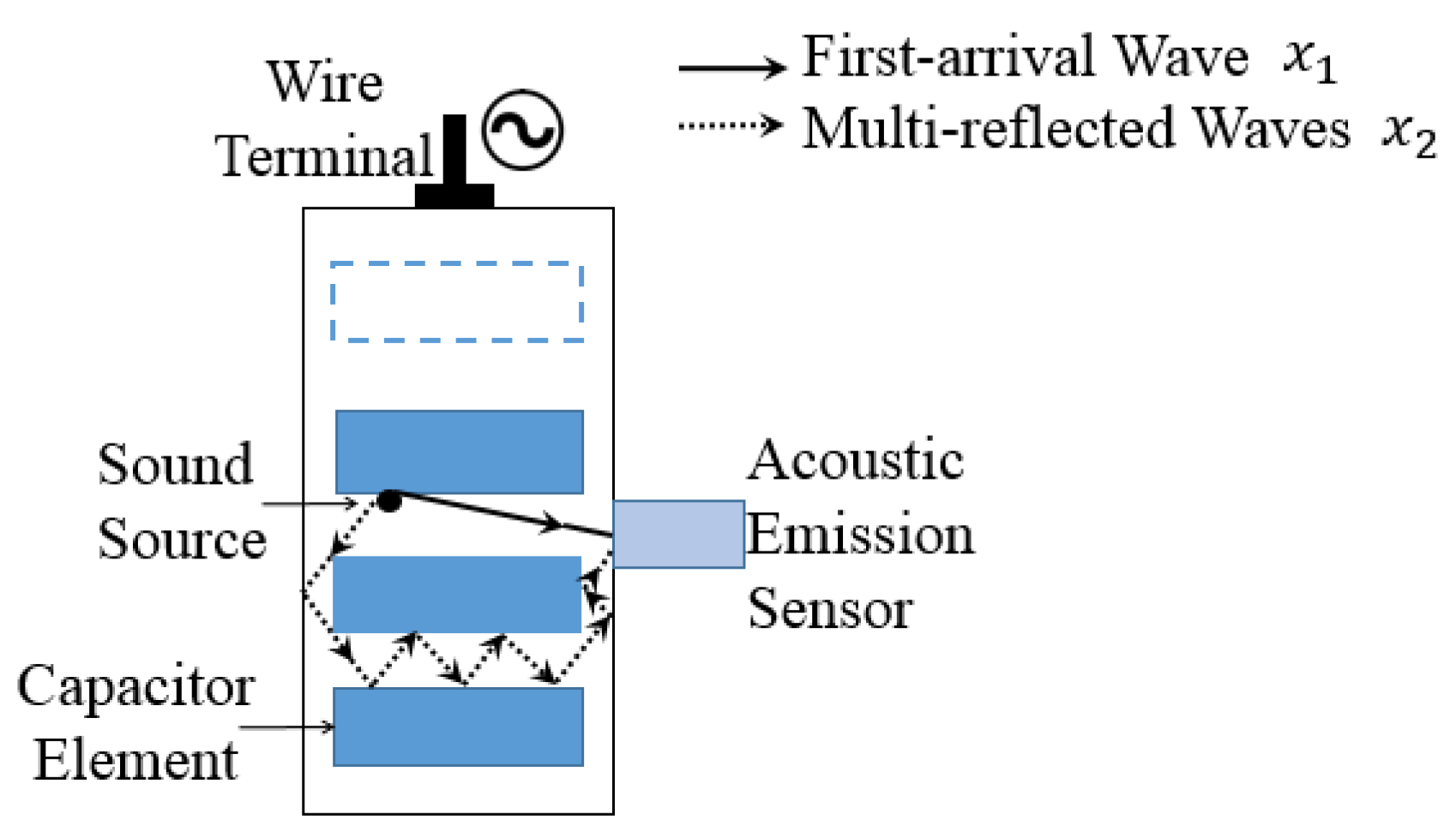
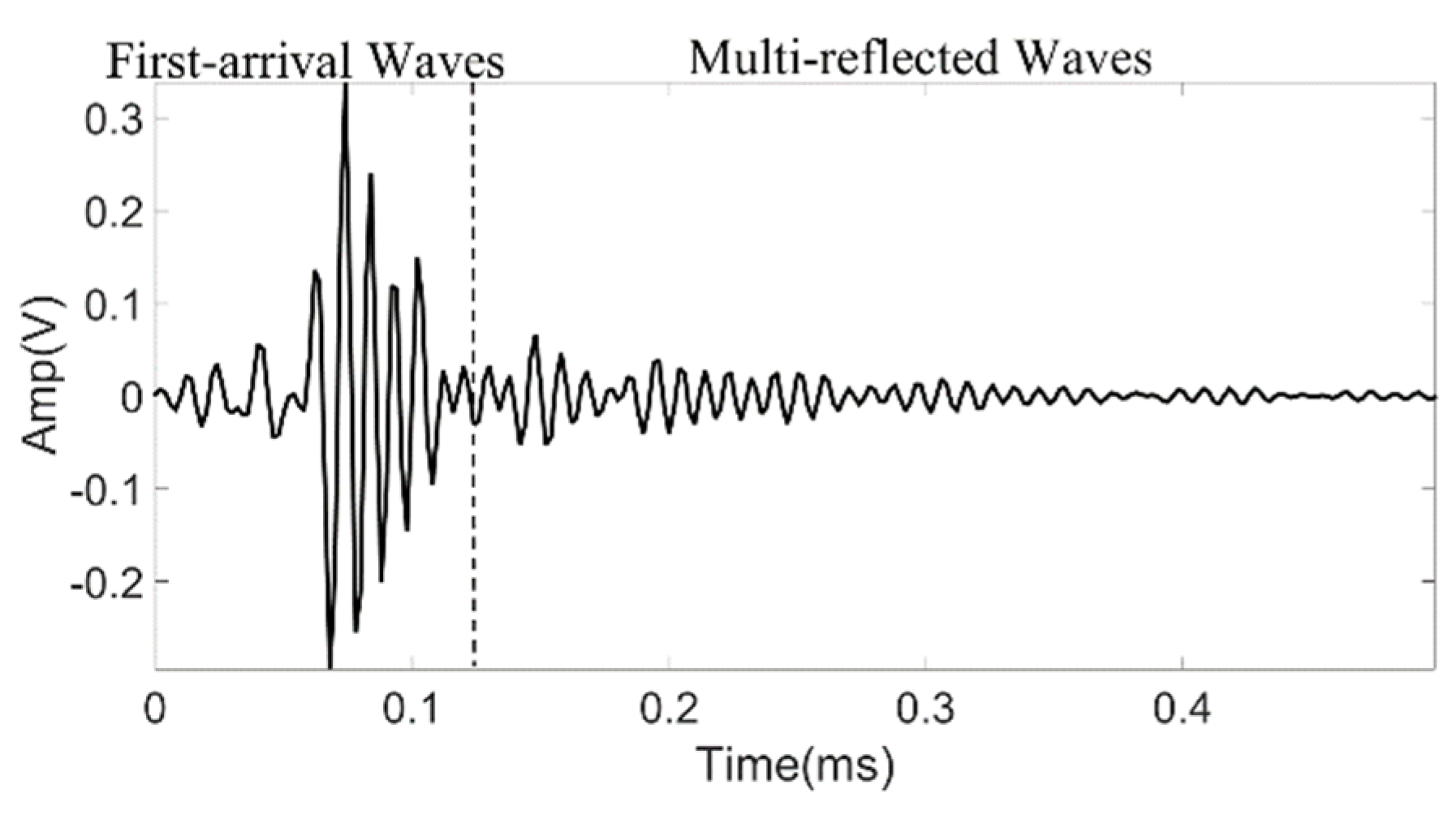
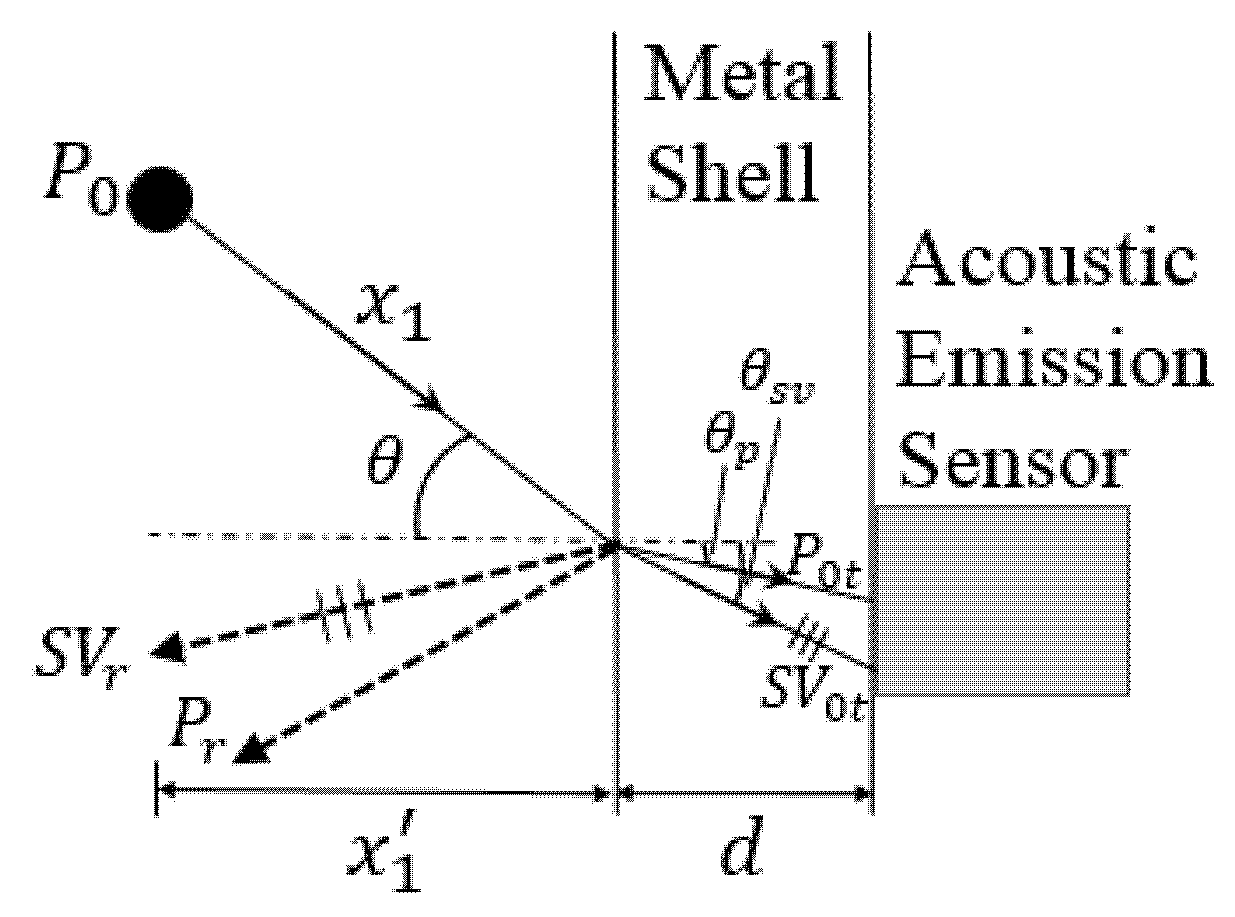
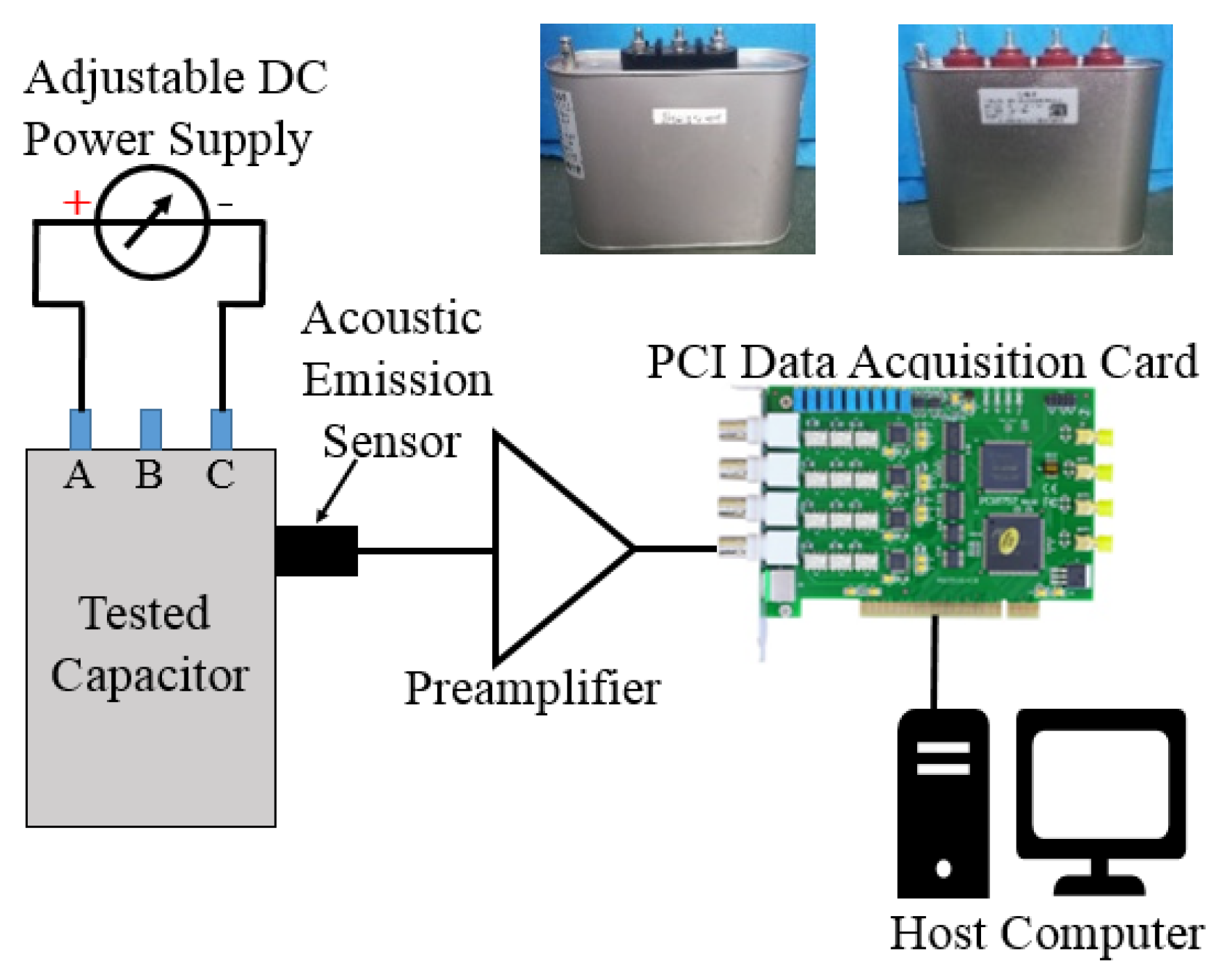
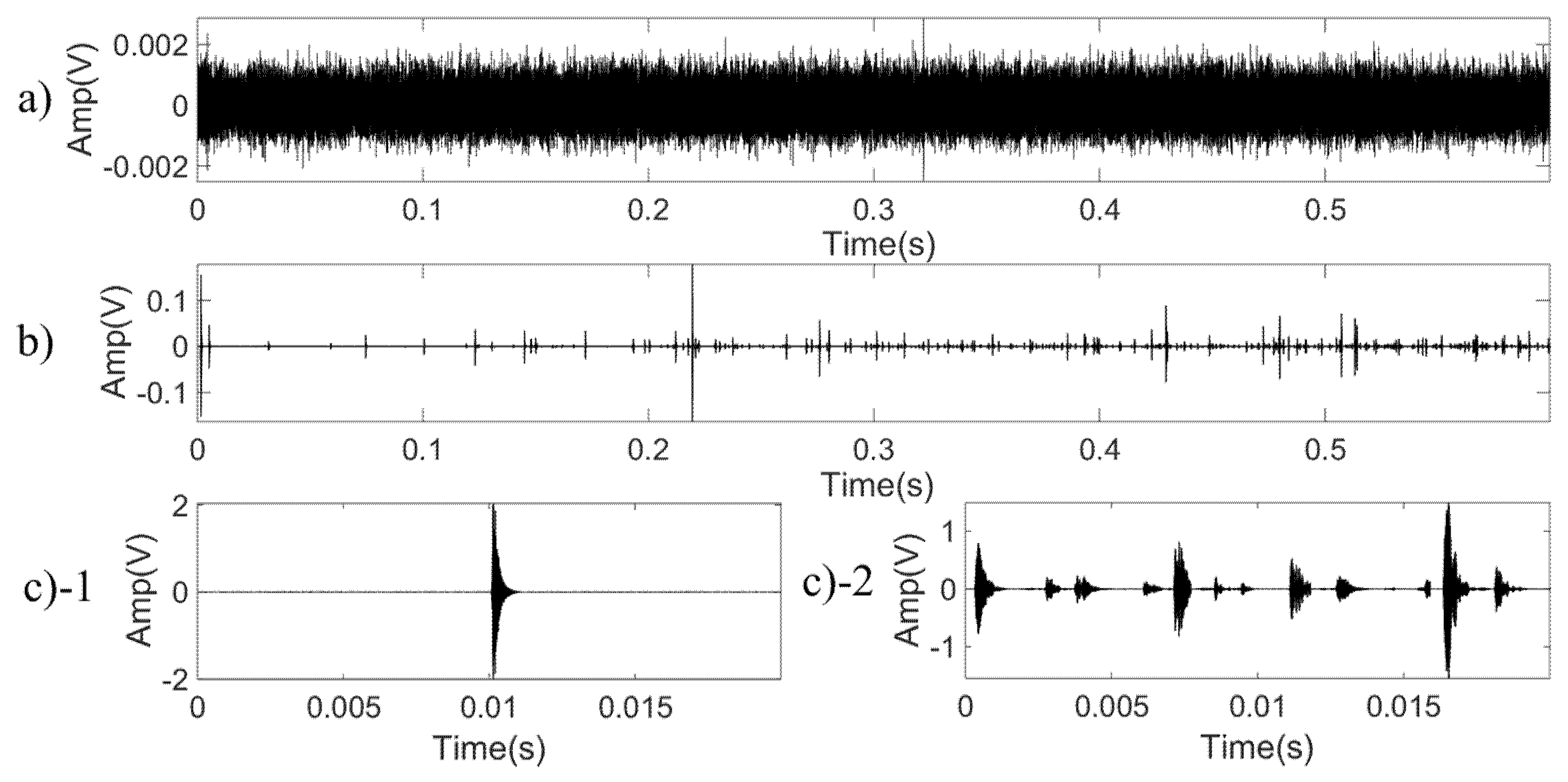
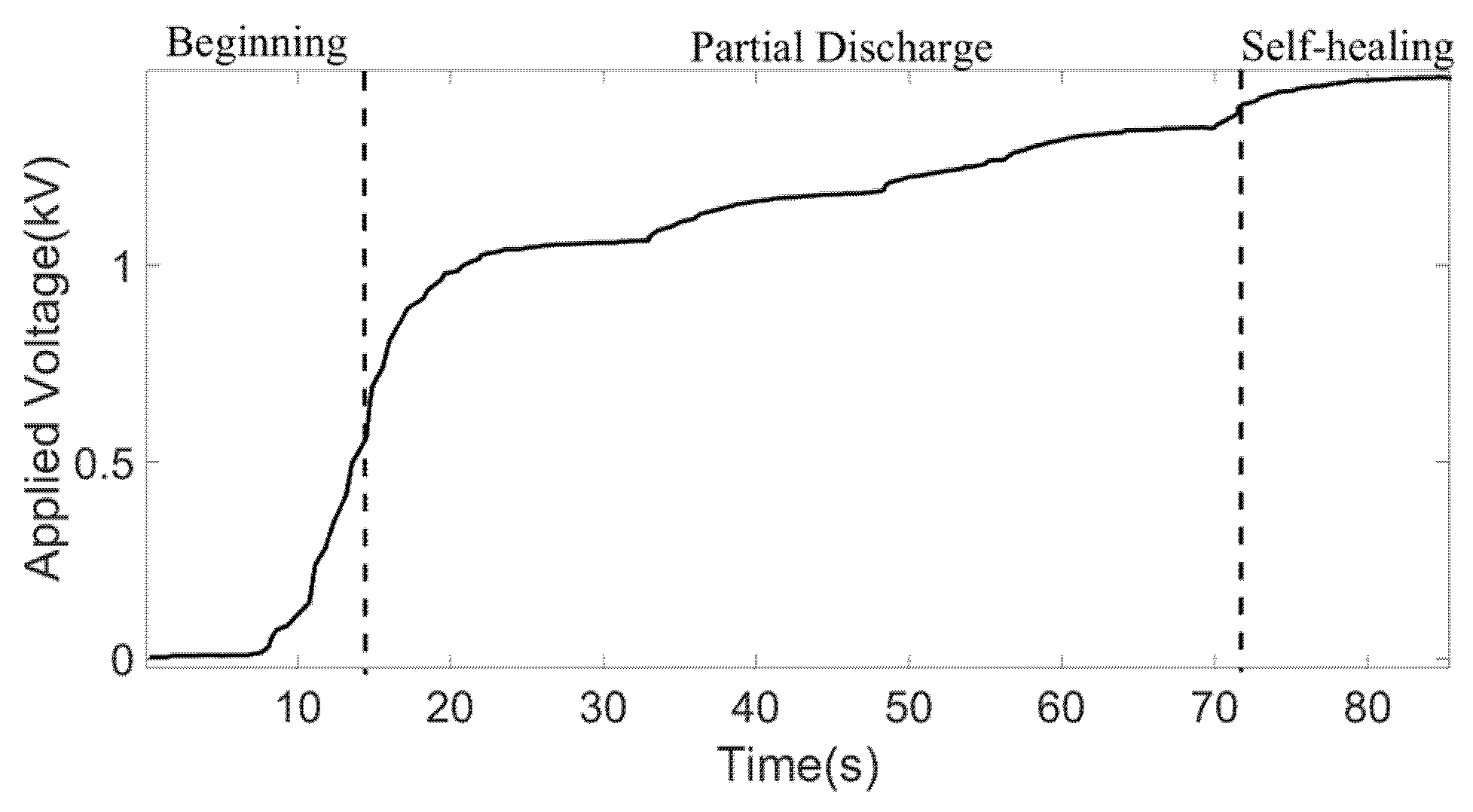
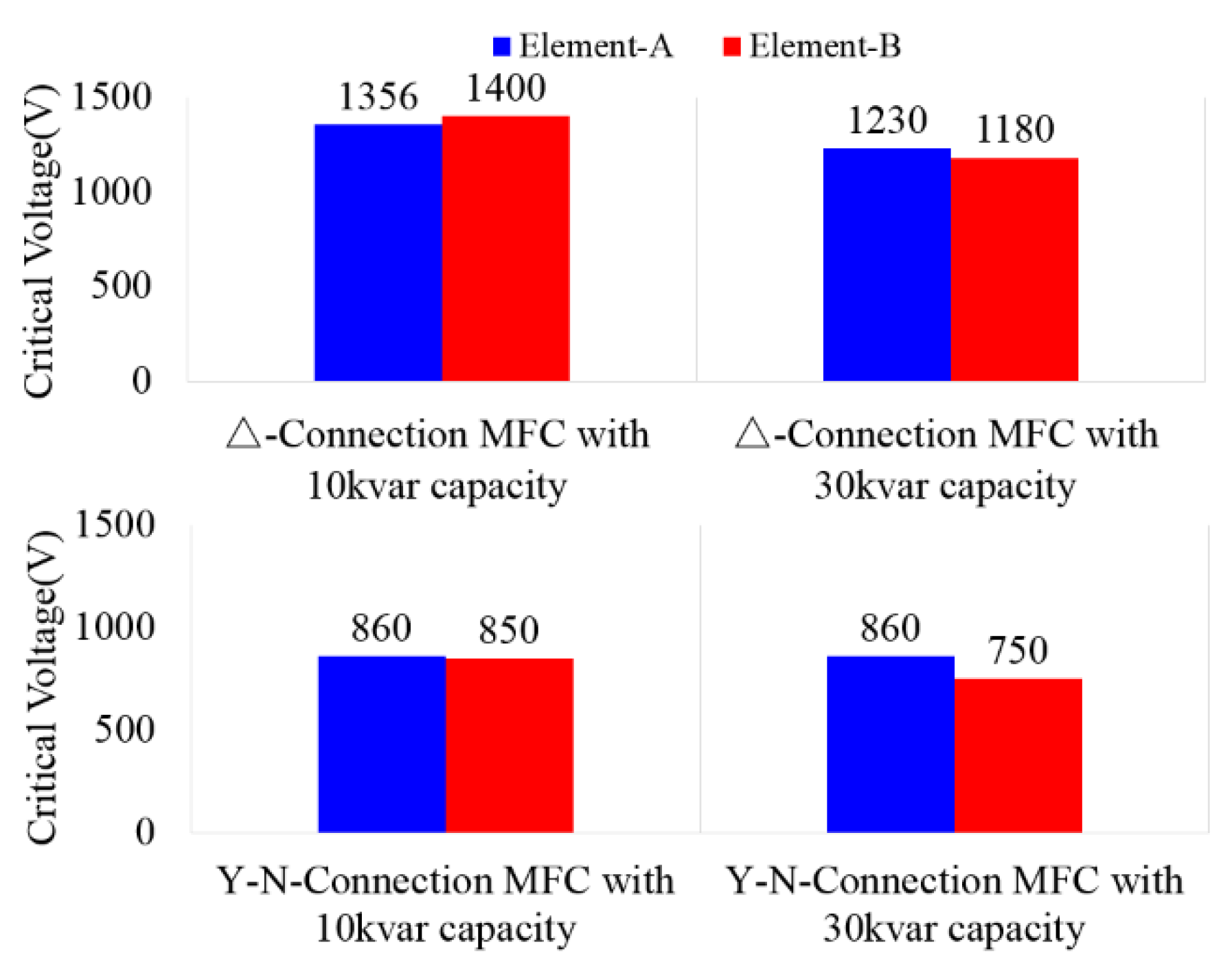
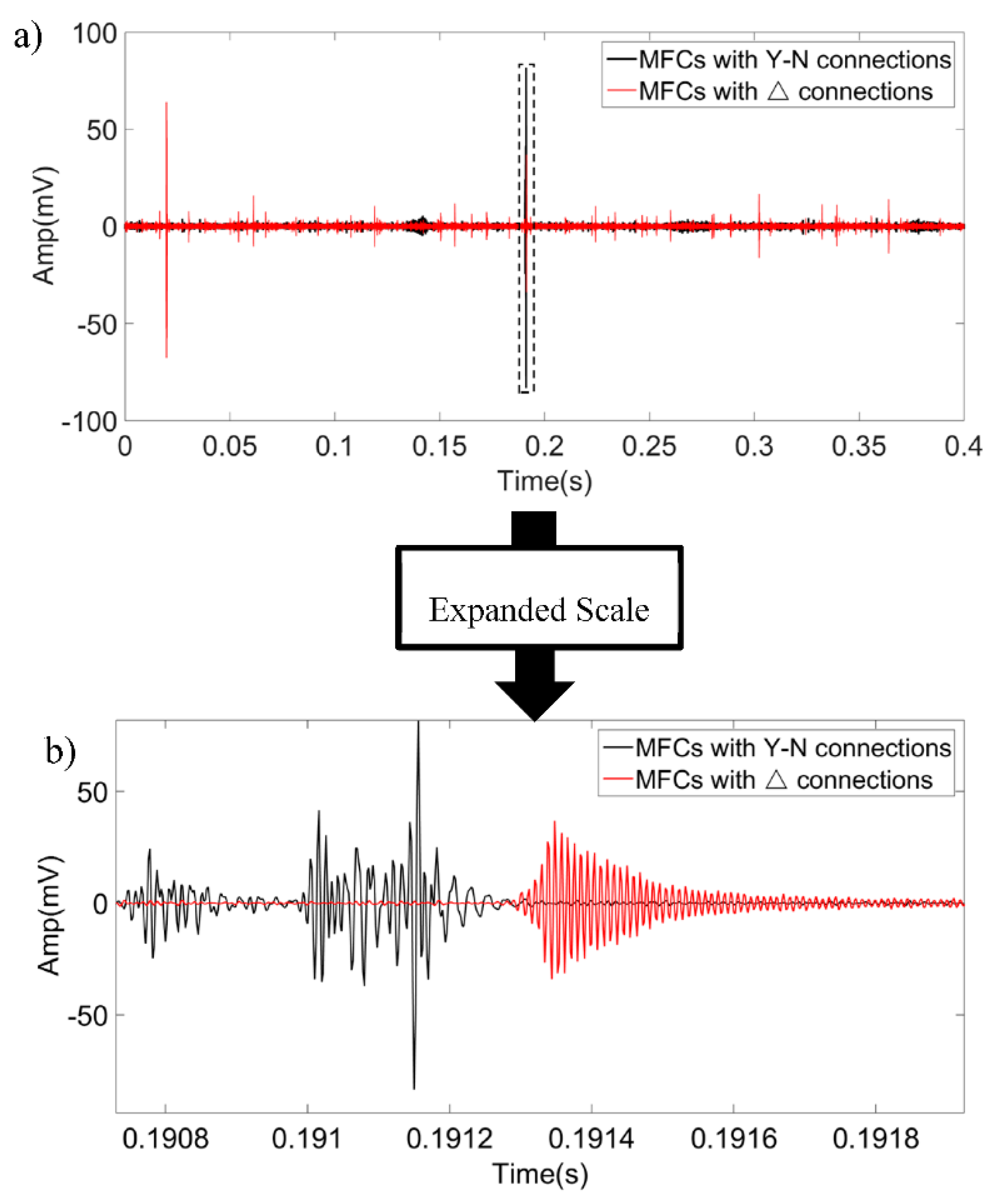
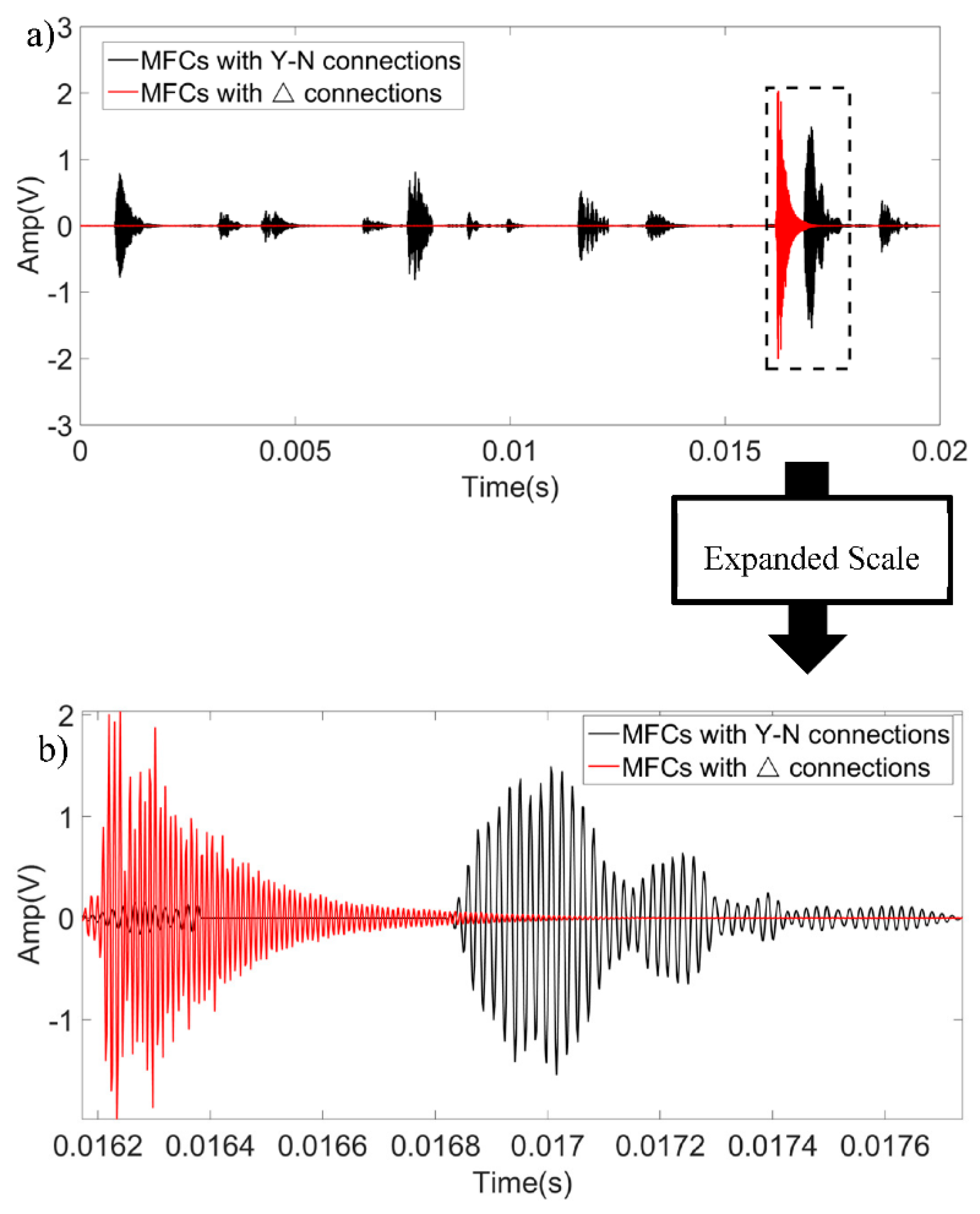
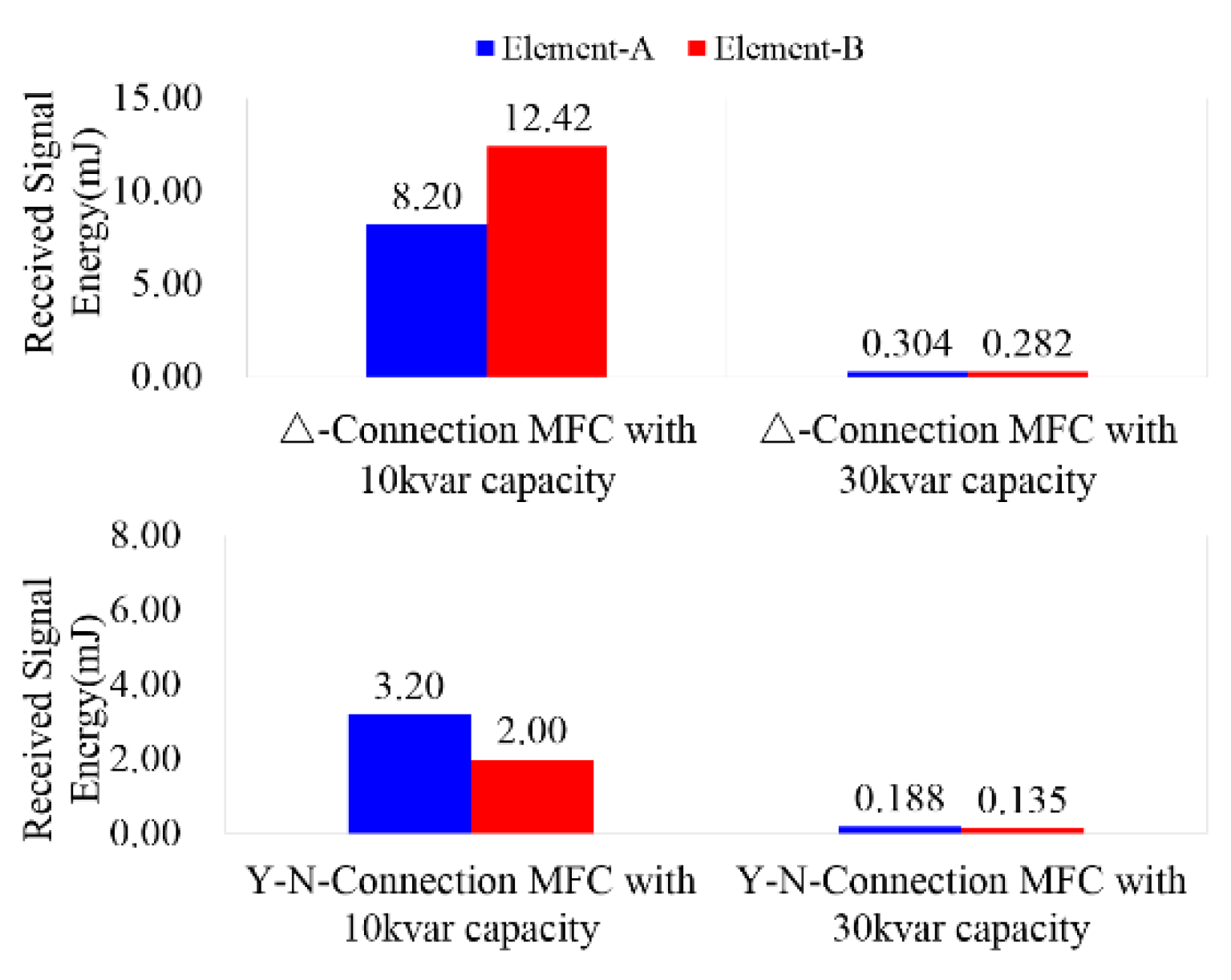
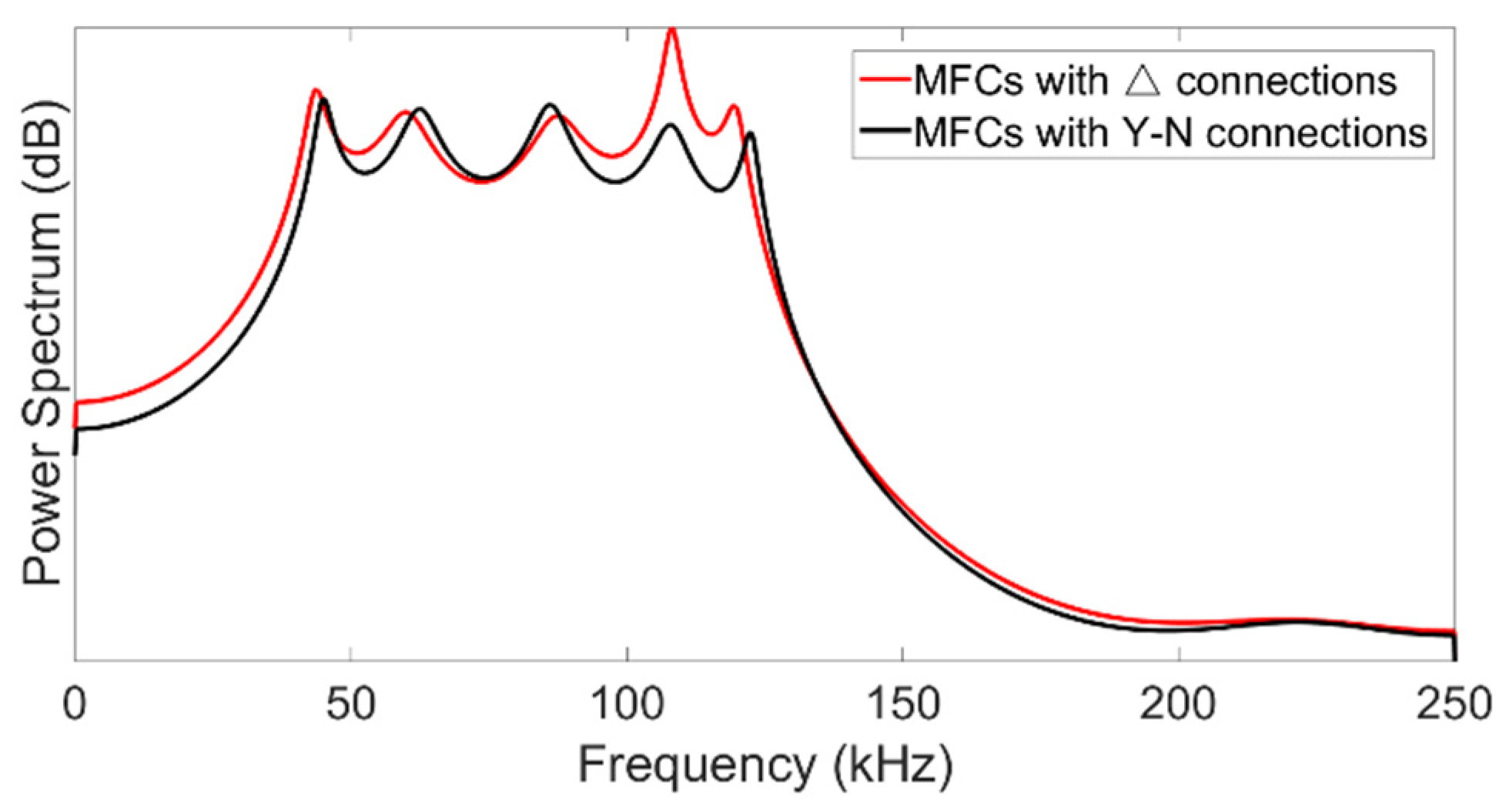
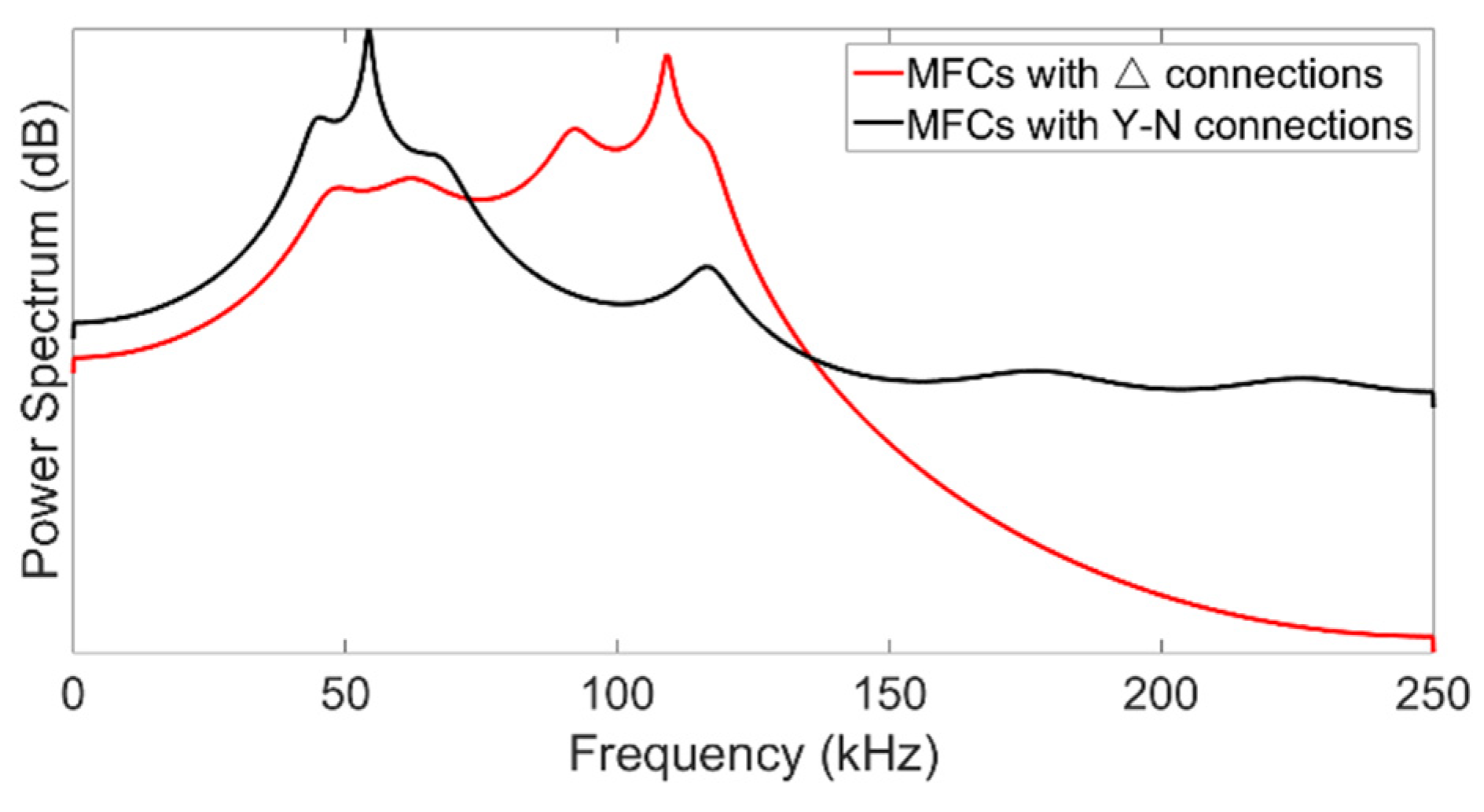
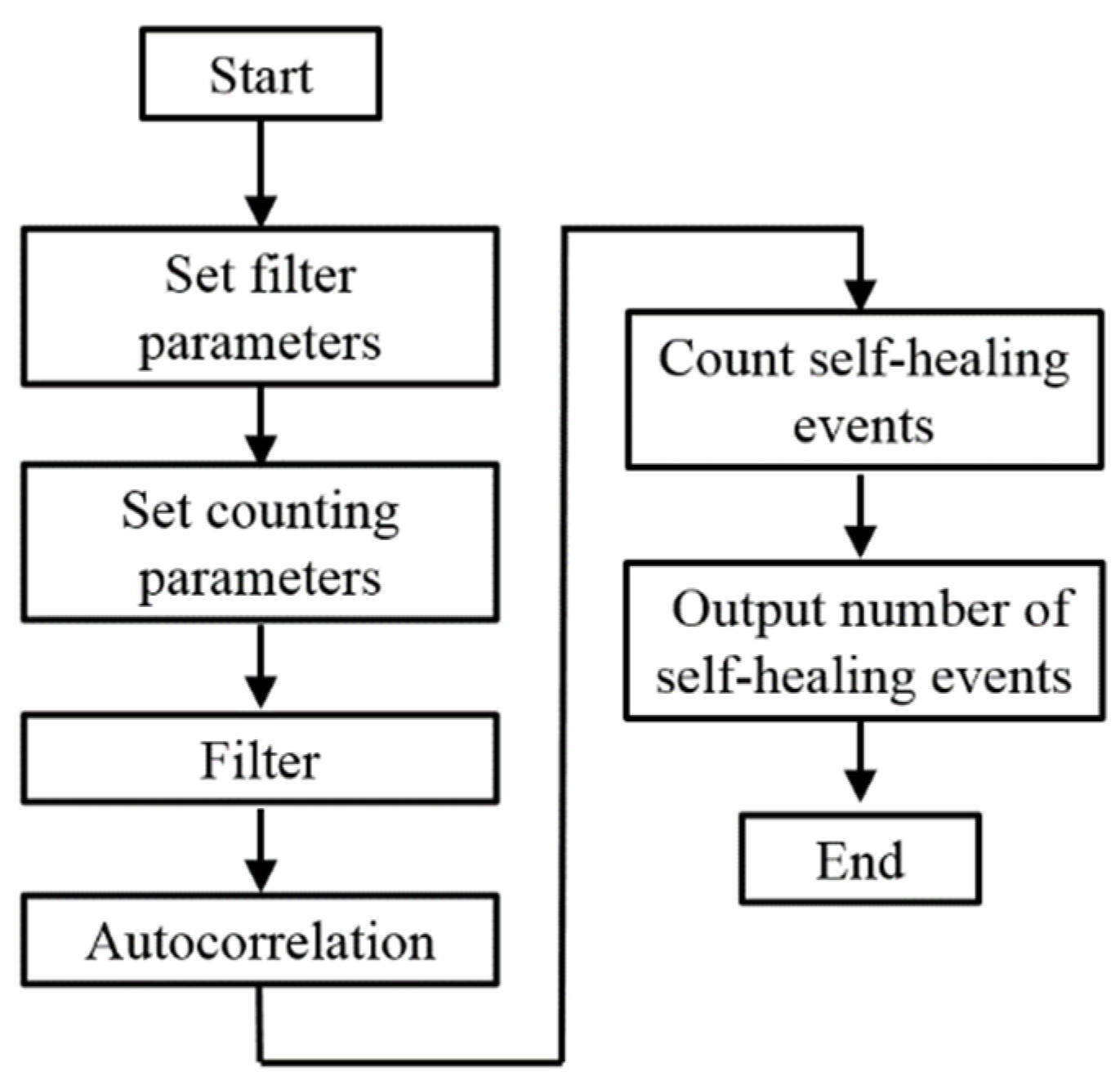
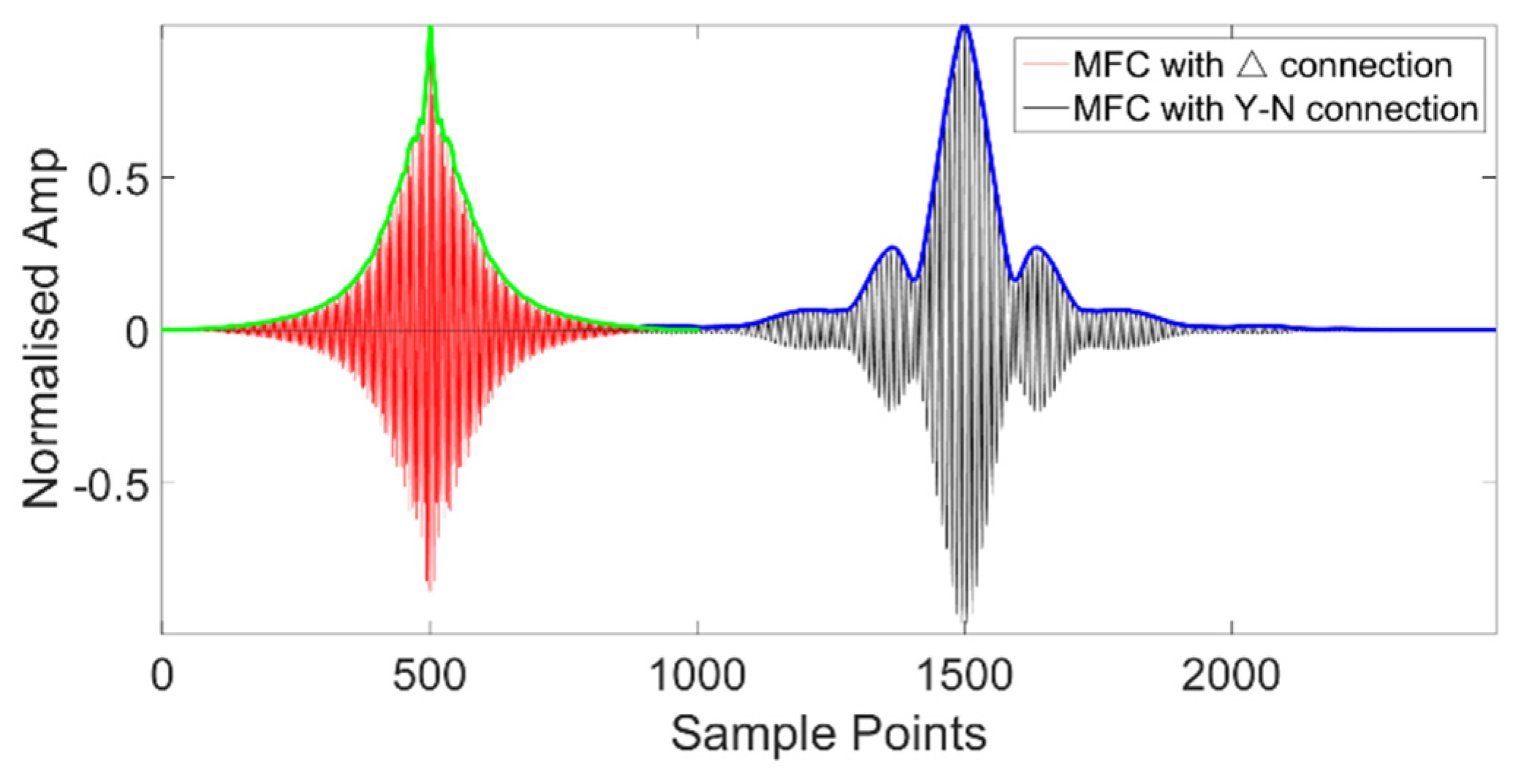
| Part Name | Material | Density [kg/m3] | Sound Velocity [m/s] |
|---|---|---|---|
| Stuffing | Microcrystalline Paraffin | 910 | 2210 |
| Polymer Films | Polypropylene | 900 | 2475 |
| Metallic Coating | Aluminum/Zinc | 2700/7140 | 6305/4216 |
| Spray Layer | Zinc | 7140 | 4216 |
| Connection Type | Nominal Reactive Power | Nominal Capacitance | Nominal Voltage | Nominal Current |
|---|---|---|---|---|
| Δ | 10 | 157.3 | 0.45 | 12.8 |
| 30 | 471.6 | 0.45 | 38.4 | |
| Y-N | 10 | 509.6 | 0.25 | 13.3 |
| 30 | 1528.7 | 0.25 | 40.0 |
| Parameters | Value | Unit |
|---|---|---|
| Type | Band pass | |
| Sampling Frequency | 500 | kHz |
| High cut-off Frequency | 120 | kHz |
| Low cut-off Frequency | 20 | kHz |
Publisher’s Note: MDPI stays neutral with regard to jurisdictional claims in published maps and institutional affiliations. |
© 2020 by the authors. Licensee MDPI, Basel, Switzerland. This article is an open access article distributed under the terms and conditions of the Creative Commons Attribution (CC BY) license (http://creativecommons.org/licenses/by/4.0/).
Share and Cite
Ma, Y.; Shen, H.; Pei, C.; Zhang, H.; Junaid, M.; Wang, Y. Detection of Self-Healing Discharge in Metallized Film Capacitors Using an Ultrasonic Method. Electronics 2020, 9, 1893. https://doi.org/10.3390/electronics9111893
Ma Y, Shen H, Pei C, Zhang H, Junaid M, Wang Y. Detection of Self-Healing Discharge in Metallized Film Capacitors Using an Ultrasonic Method. Electronics. 2020; 9(11):1893. https://doi.org/10.3390/electronics9111893
Chicago/Turabian StyleMa, Yusheng, Haitao Shen, Chunming Pei, Huanyu Zhang, Muhammad Junaid, and Yuxing Wang. 2020. "Detection of Self-Healing Discharge in Metallized Film Capacitors Using an Ultrasonic Method" Electronics 9, no. 11: 1893. https://doi.org/10.3390/electronics9111893
APA StyleMa, Y., Shen, H., Pei, C., Zhang, H., Junaid, M., & Wang, Y. (2020). Detection of Self-Healing Discharge in Metallized Film Capacitors Using an Ultrasonic Method. Electronics, 9(11), 1893. https://doi.org/10.3390/electronics9111893






